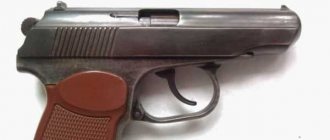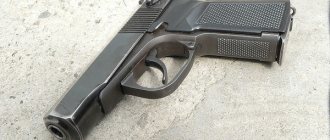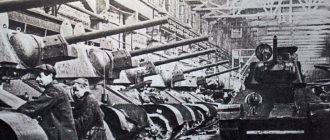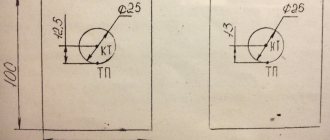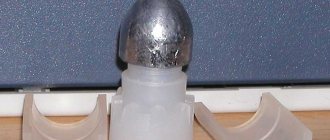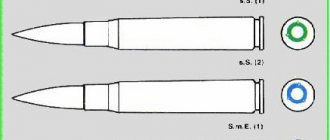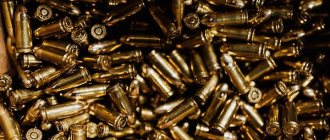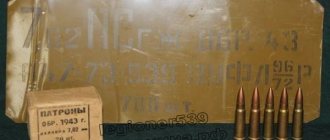Characteristics of the traumatic cartridge
Energy of a traumatic cartridge
In any case, even within the strictly limited maximum energy of 91 J, there are completely different calibers that interact with the target in completely different ways - it all depends on the total mass and speed of the bullet as it leaves the barrel.
Bullet weight
An example of such a heavy bullet with low speed and weak penetration is the 18x45T caliber. It has an amazing stopping effect, but if the target is wearing thick winter clothing, the hit will feel a little stronger than a regular punch.
As always, there is no definite answer to the question about the mass of a bullet, but experience shows that bullets weighing from 2 to 4 grams cope best with their tasks.
Bullet speed
Penetration abilities depend on speed, and a bullet with a higher speed at the exit from the barrel will penetrate more serious obstacles. In our equation with the maximum allowed muzzle energy, increasing velocity will mean decreasing mass, which will lead to a decrease in the stopping power of the bullet.
The bullet can easily pierce a thick layer of clothing, but it will poorly transfer kinetic energy to the target - even if seriously wounded, the aggressor can continue the attack.
Thus, we come to the conclusion that the greatest efficiency is shown not by the heaviest and not the fastest bullets, but by those in which mass and speed are combined in the best proportions possible within the energy limits of 91 J.
Sleeve material
In total, there are 4 types of the most common materials for making sleeves:
Bimetal
- “alloy” of steel coated with copper or zinc. Suitable for cartridges with a large amount of powder and high muzzle energy, as it is slightly deformed. A thin coating may interfere with normal extraction.
Brass
- a ductile metal that can be greatly deformed, but due to the same ductility this does not critically affect extraction, which means such cartridges will be easy to remove from the chambers of the revolving drum. Sometimes they tear in the chamber during early recoil of the bolt, so they may require adjustment of the recoil spring on large loads of gunpowder.
Steel
- has the greatest resistance to deformation, so cartridges made from it can withstand the highest weights of gunpowder. They do not work well with dirty, unchromed or damaged chambers - extraction will be delayed.
Calibers of traumatic weapons
As mentioned above, the Russian market offers a very large number of calibers with completely different properties - some are more accurate, some stop better, and some can combine different advantages, such as shooting with non-standard ammunition.
.380 IU
Muzzle energy - 25-50 J
Bullet weight - 0.7-0.8 g
Velocity at the muzzle - 240-350 m/s
We do not recommend using this caliber for self-defense, but for recreational shooting its existence is more than justified - weak recoil and knock-up are combined with the low price of ammunition.
Source
Cartridges 9mm R.A. produced by PKP AKBS LLC
The AKBS company is currently the market leader in ammunition for traumatic weapons.
The company does not have its own cartridge production, so it places orders with foreign companies that produce cartridges, assembling cartridges independently.
Since the end of summer 2011, the line of cartridges from this manufacturer is presented as follows:
“Sports” (bullet weight 1 g), “Standard” (bullet weight 0.8 g), “Magnum” (bullet weight 1 g).
The company currently produces the following range of cartridges:
- PP9RP "Magnum" cartridges for INNA Tanfoglio, abbreviated: MdI (production discontinued since the summer of 2011)
The mass of a rubber bullet is 1 g.These cartridges, due to the increased bullet weight, are technically designed for firing from an INNA pistol, however, they can also be fired from any rubber arrows, with the exception of MP-78-9T(TM), Walther P50T. It is generally categorically not recommended to shoot from first-generation rubber arrows. The cartridges are produced in both steel and brass imported sleeves. The rubber bullet is coated with a layer of graphite for ease of production, giving it a distinctive gray-silver color. Cartridge markings on the bottom of the case: “AKBS”, “9mm”
- PP9RP Magnum cartridges (since the summer of 2011, cartridges are equipped with a bullet weighing 1 g)
Produced since spring 2009. The mass of a rubber bullet is 0.8 g. These cartridges can be used in all rubber arrows, except the first generation. The cartridges are produced in both steel and brass imported sleeves. The color of the bullet can be different, such as black, red, and brown.Cartridge markings on the bottom of the case: “AKBS”, “9mm”
- PP9RP “Standard” cartridges (previously called “50J”).
Produced since 2007. The mass of the rubber bullet is 0.7 g. These cartridges can be used in all rubber arrows. The cartridges are produced in both steel and brass imported sleeves. The color of the bullet can be different, both black and red. These cartridges are weaker than MdI and Magnum cartridgesCartridge markings on the bottom of the case: “AKBS”, “9mm”
- PP9RP “Sports” cartridges
Produced since 2009. Due to the optimally selected weight of gunpowder and rubber bullet, the optimal rolling angle of the cartridge case, these cartridges have excellent accuracy of fire (at the expense of power), and are therefore suitable for training and sports shooting.Available in both steel and brass sleeves.
Currently, the bullet weight is 0.7 g, since the summer of 2011 - 1 g.
Cartridge markings on the bottom of the case: “AKBS”, “9mm”
Which 9ra cartridges are better?
In Tempe there is one in Klimovsk.
———- If you have a Guardian Angel, remove it from the safety lock.
They appeared at Air-Gun on Dubrovka.
———- If you have a Guardian Angel, remove it from the safety lock.
Your prices in Moscow are good. We have fortune from 25 and in heaven, because they sell about the same, but always a little cheaper than fortune.
Prices, by the way, are not in Moscow, but in the Moscow region.
Prices, by the way, are not in Moscow, but in the Moscow region.
Originally posted by BPuGaDeeP: The cartridges are crap, let's be honest)
Unfortunately, it might get better in the future.
